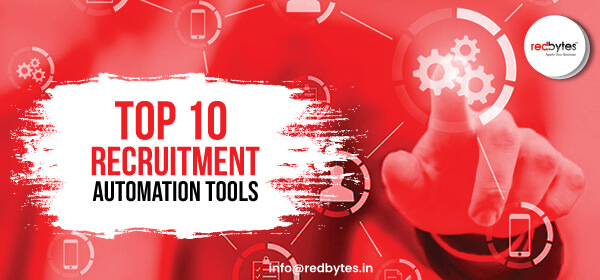Hiring new talents in your firm is an inevitable process. Successful recruitments are the results of great pre-planning stages. Recruiters identify the required job posts, create ads, and gauge maximum candidates for the vacancy. So, what changes have occurred in the hiring process?
Let’s explore the major changes in the hiring process, those from traditional hiring to modern recruitment strategies.
Technological advancements have transformed the whole stages of hiring more flexible and easier. Beyond this, the different processes of hiring stages have witnessed shifts overtime.
#1. Extensive Reach
There was a time when your job post gets filled with applicants after seeing ads in local dailies or magazines. It is the traditional advertising method that gauge candidates into your firm. But, today the number of applicants for a single post is huge.
The tedious task of expanding your team through a professional candidate via newspaper ads is now replaced. A natural pool of talents is possible in modern advertisement strategies.
Today, the reach of your job vacancy is determined by the Internet. Your talent requirement reaches every part of the world through LinkedIn, Twitter, Facebook, and more networks.
Hiring managers too can get relieved from interviewing the same candidates again and again because of the limited reach of your job post.
The modern recruitment process indeed invites hundreds and thousands of applications for a post.
Novel technologies help in resolving this flood of resumes and find out perfect fir for your company’s needs. So, one of the major changes that happened in the initial phase of hiring is that your job posts gain wider reach through diverse technologies available now.
#2. More Focused on the Work Culture
There was a time when the same candidates appear for several job posts with a common resume. Hiring managers considered their educational qualifications, work experience, awards, etc.
So, are these considerations successful for every workforce? This system started changing by a few years, where recruiters focused on ‘candidates’ who can cooperate with their work culture rather than high qualifications.
People were running behind satisfying job opportunities that ensure the highest salary, health benefits, etc. They were not aware of the company culture, the volume of workers, or any such factors. But now, it is the easiest thing to apply online for preferred job posts.
And recruiters give importance to candidates to have collaborative skills, knowledge about the work type, and more practical things regarding the job.
Recruiters emphasize the concept of ‘candidate outlook’ rather than technical capabilities. You can notice many firms now refuse candidates with attitudes that never fit their job culture. Organizations expect personal traits in candidates so that it contributes as a whole for the company’s success.
Read Also : Staffing Vs Recruiting Vs Hiring
#3. The Interview Stage
The traditional interview process is relevant to date but the COVID protocols have restrained companies to conduct such direct interviews.
It is a truth that the pandemic period has forced recruiters to do things virtually. Interviewing candidates in different places around the globe is easier via Video interviewing.
Many firms have shifted their entire screening stages virtually. It is visible that the video interview phase is more timesaving and cost-efficient too.
The lengthy hiring stages are now replaced by hiring apps and tools. You can make use of handy app solutions to find required job posts and book interviews in advance. Or else, the job ads circulated through the internet gauge potential candidates to your firm.
Companies manually sort or use software to sort people and schedule interviews.
The scheduling process is also now easy. In traditional hiring, recruiters have to do several calls on each change in the hiring process.
But there is innovative interview scheduling software today. Starting from the date, time, and venue of the interview, this scheduling software reduces your headache.
Recruiters can focus on preparing for the interview rather than calling candidates back and forth about the interview. Candidates can perform well through video calling software and recruiters can hear and see the candidate’s performance in real-time.
Even technology is evolving each day, many companies still prefer direct face-to-face interviews to find the best choice of job posts.
#4. Effective Online Presence
The Internet is ruling every sector now. It was hard for firms to establish their brand among people which was only possible through traditional advertising methods.
But today, recruiters and job seekers can access company information in diverse formats. Job seekers can fully enquire about the company he/she has applied for.
Companies work on their websites, blogs, pictures, and other content to be worthy & helpful for page visitors. Candidates get to know their job position, responsibilities, and the team they have to work with. Hiring managers must be constantly monitoring these contents which are significant in attracting or deterring candidates.
The recruiter has to make each person in your company aware of the work culture and values. If it is a creative firm, you can effectively design pieces of stuff, post them in your social media accounts, and grab job seekers naturally into it.
Business firms on the other hand can repurpose every topic to make their presence clear and recruit potential candidates at the earliest.
Many companies devote time to update their online presence and it is very essential in this digital era. A single job post reaches many people around the globe.
So, every online content you publish should be right and portraying your company’s stand. Dedicated personnel for managing your online presence is appreciable. Your messages must be well composed and attract the right fit for your job position.
#5. Greater Networking Possibilities
Before the advent of the internet, recruiters had to rush and take part in every networking event. It helps in creating promising business relationships related to your niche.
Business professionals exchange their business cards, discuss modern strategies, and many intangible gains. If the recruiters miss those events, they are missing out on many young candidates. Earlier, Post work events are the only means of reaching potential candidates from diverse networks.
Today, LinkedIn, Twitter-like social networks have taken up this role of mixing and mingling reliable candidates. Even now, there are dedicated networking events but not that enticing recruiter like before.
Because people are now able to access any type of niche market through the internet itself. Then why should recruiters fly to different events?
Facebook groups, LinkedIn posts, Twitter chats, etc are now effective means of hiring versatile and credible talents for your firm. There is no need for long-distance driving for networking events in your city. Hiring managers can efficiently meet people across the globe from different walks of life.
#6. Changing Employee Expectations
Recruiters earlier select candidates based on individual resume and their technical abilities. But, surprisingly, employee expectations have evolved. Most hiring managers now emphasize on
- Skills & capabilities required for the job post.
- Personality traits for a collaborative workforce.
- Adaptable to changing work environment and technologies.
There are more such factors that recruiters look upon. The whole hiring stages are tailored towards candidate experience. Candidates are now able to have easy communication with the recruiters and never miss any updates regarding their recruitment.
Even interviews are scheduled at a convenient time for both hiring managers and potential candidates.
Video interviewing has evolved more helpful for candidates as they can manage various engagements other than the interview. In traditional hiring, candidates have to wait for long, and delayed interview sessions can make them more passive.
The recording feature today helps the hiring managers & co-workers assess the candidate again anytime.
In the pre-internet period, candidates have to wait for many days to get a reply about their further selection procedures. If the candidate gets disqualified, sometimes they will not be receiving any messages at all. These types of frustrating practices don’t exist today. Timely emails and messages reach each candidate with details.
Read Also : 10 Best Recruitment Automation Tools 2020
Conclusion
It is visible that the hiring process will keep on changing with technology. We can foresee a giant leap of modern hiring strategies in the digital era.
Recruiters are adapting to virtual practices and reaping successful benefits too. Undoubtedly, hiring practices will get more modernized and recruiters gain far-reaching advantages.







